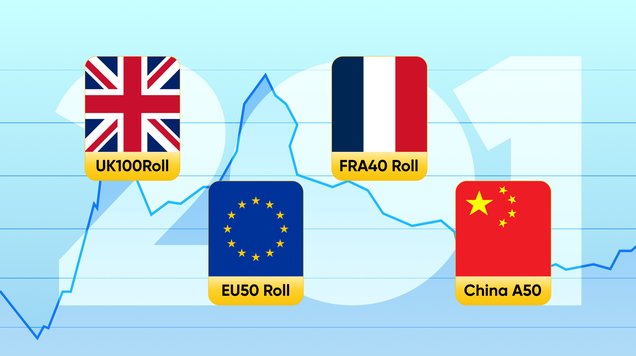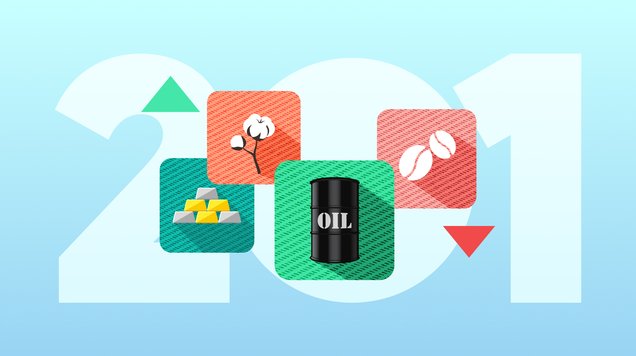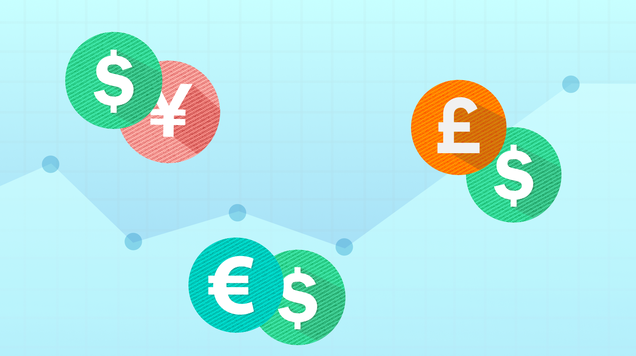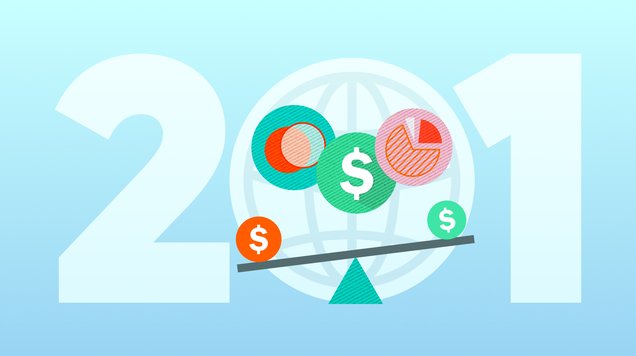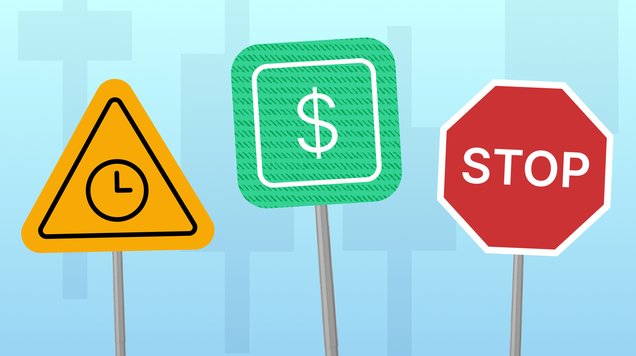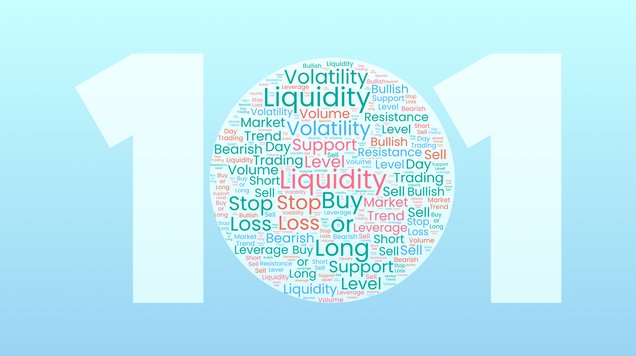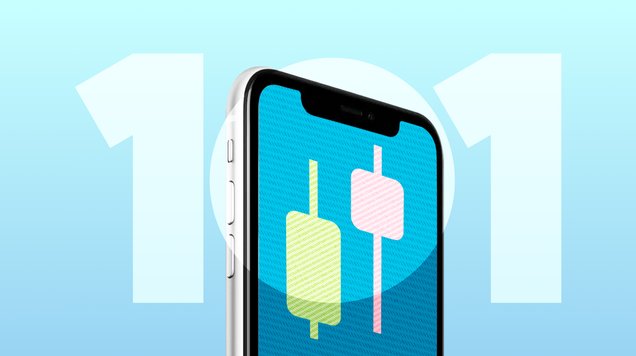Forex 101
Learn how to trade major, minor and exotic currency pairs in the global forex market
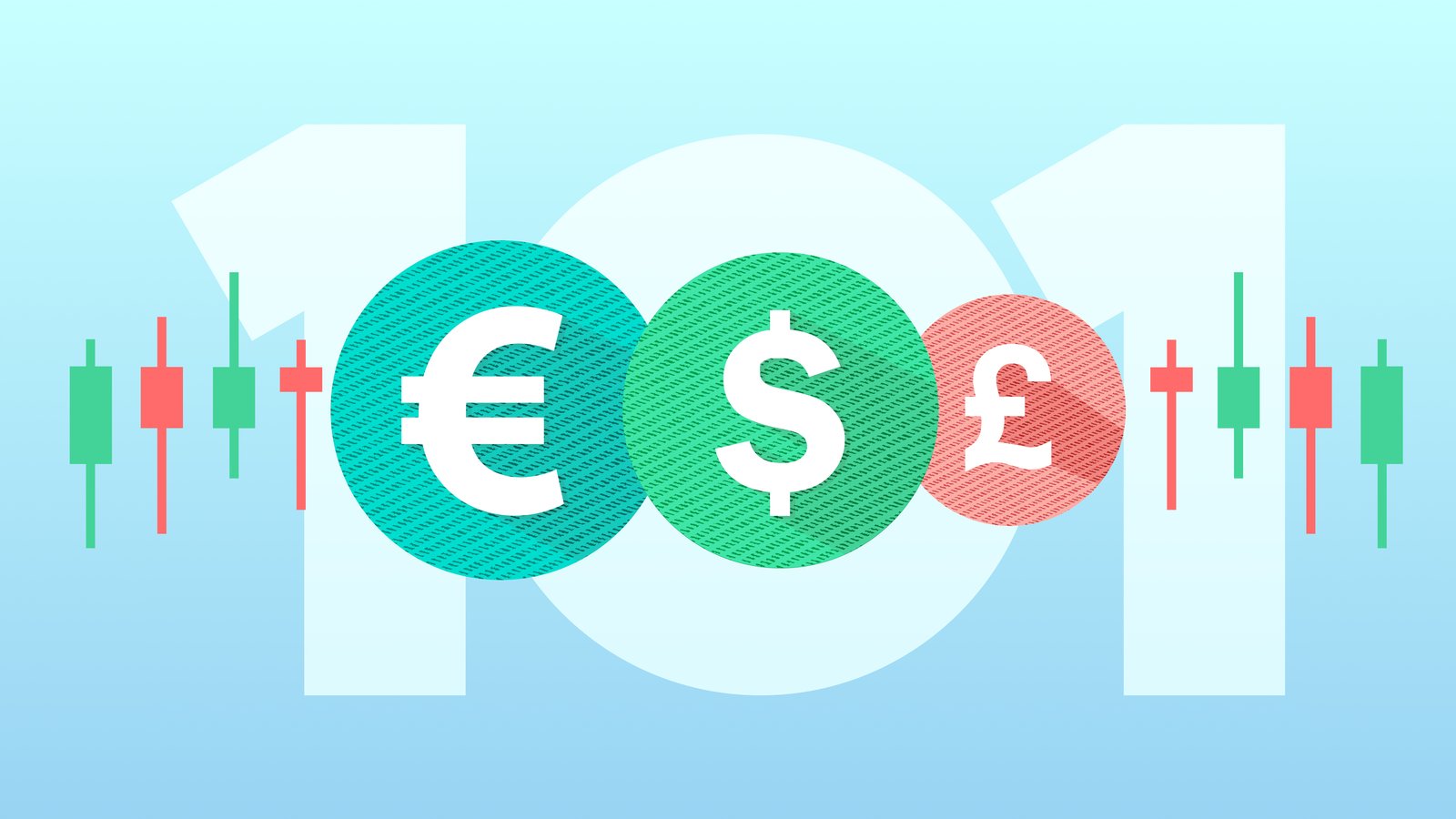
Forex trading means buying and selling currencies in large quantities, making a profit as prices change
High daily trading volumes and flexible trading hours make the forex market an interesting opportunity for traders of different experience levels
Forex CFDs can be traded with leverage, which means traders can use a marginal deposit to control a larger trade size
Conducting market analysis and creating a trading strategy are essential steps for beginners' navigating the forex market
Day trading, swing trading and position trading are common strategies used by forex traders
Introduction to forex trading
Buying or selling currencies in small amounts is familiar to many who have had holidays abroad. However, currency pairs can be bought and sold in much bigger volumes on online marketplaces with the aim of making profit. This is called forex or ‘foreign exchange’ trading.
Forex, or the FX market, is one of the largest financial marketplaces in the world, with daily trading volumes exceeding trillions of dollars. Forex is also a non-centralised market which means it doesn’t have a central exchange, and currencies are typically traded in the over-the-counter (OTC) market.
Profits can be made from forex trading when exchange rates change, and since there is constantly a lot of activity in the market prices will keep moving, creating interesting opportunities for individual traders. Changes in demand and supply in the forex market can be created by several things including monetary policies and geopolitical events.
Forex is traded in the major financial centres of the US, Europe and Asia, meaning that when markets close on one continent, they open on another. Therefore, currency pairs can be traded 24 hours a day, five days a week. Forex trading hours are more flexible compared to other financial products that follow the opening and closing times of the New York Stock Exchange, such as shares and ETFs.
How do you trade in the forex market
Anyone with sufficient funds can explore opportunities in the forex market by opening a trading account with an online broker. Let’s have a look into the basics of forex trading and some useful terminology before you get started.
Currencies are always traded in pairs because when you buy one, you sell the other. FX pairs are normally divided into major, minor and exotic pairs.
- Major currency pairs include the US dollar as the base or quote currency, and these pairs account for up to three-quarters of all foreign exchange trades. EURUSD and GBPUSD are examples of major currency pairs. Major currency pairs often face fewer liquidity problems due to the continued demand for these currencies in the market.
- Minor currency pairs are other significant currency pairs that don’t include the US dollar, like EURGBP and GBPAUD.
- Exotic currency pairs include the currencies of smaller or emerging financial markets. Exotic pairs often experience higher volatility which allows opportunities for profit, but they also might experience liquidity issues as the trading volumes are lower and there might not always be demand.
As the FX market is so volatile, there’s a lot of terminology in the marketplace that you should be aware of. Trading slang was invented to make sales faster before markets went digital.
Base currency is the currency seen on the left of a currency pair, whereas the currency on the right is called a quote currency. For example, in the EURUSD pair, the Euro is the base currency and the US dollar is the quote currency. The value of the base currency is always one, and the exchange rate shows how many units of the quote currency are needed to buy one unit of the base currency. If the EURUSD exchange rate is 1.0972, it means 1.0972 dollars is worth 1 euro.
Ask price means the price at which you will buy the currency, and bid price is the price at which you will sell it. Spreads are the difference between the bid and ask prices offered by the forex broker. For example, for the EURUSD pair, the bid price offered by the broker could be 1.09721 and the ask price 1.09722. This would be a spread of 0.1 pips.
A pip in forex means a one-digit movement in the fourth decimal place of a currency pair. Because the price changes in forex are usually relatively small, the trades are made in big volumes in order to achieve bigger profits. Currencies are usually traded in lots, a standard lot size being 100,000 units of the base currency.
What is a forex CFD?
Forex CFDs are a way of trading with currency pairs without directly owning the asset. CFD stands for ‘a contract for difference’, and these contracts are made between two parties to enable speculation on the price change of an asset.
You can make a CFD by predicting whether the price will rise or fall based on your analysis and research and make a profit if you are right in your prediction. Therefore, forex CFD trading allows traders to benefit from falling prices as well.
The main difference between trading forex and forex CFDs is that in forex trading you directly buy currencies, whereas in forex CFD trading you speculate without owning the currency directly. Both ways of trading forex allow you to make profit if the price moves favourably, but it's important to remember that they also include the possibility of losing money.
CFDs are often leveraged, meaning that smaller initial deposits lets traders control bigger trading volumes. With a leverage of 1:2000, you could trade with $20,000 by investing only a margin of $100. Therefore, leverage offers the opportunity for larger profits but can equally lead to larger losses. The higher the leverage, the more potential gains or losses are multiplied.
Forex CFDs can have a fixed end date, or they can be rolling contracts that remain open until the trader decides to close the position. CFDs with fixed end dates are called futures, whereas continuing positions are often referred to as rolling CFDs.
Beginners’ tips for trading forex
Whether you start trading forex or forex CFDs, there are useful tips that all beginners should know.
Making profit in forex trading is all about predicting the price movement of a currency pair correctly, so conducting market analysis and creating a trading strategy are the first necessary steps for beginners. It’s important to know how the market works, what are the current trends, and what kind of factors can affect prices. Your decisions should always be based on market analysis and your chosen strategy, not your feelings or emotions.
There are various strategies and tools you can use to analyse the market and its movements. Technical and fundamental analysis are the most used. Depending on your trading style and chosen trading strategy, you can find certain market analysis tools more useful for you than others.
Day trading, swing trading and position trading are common trading strategies used by forex traders. Day and swing trading focus on short-term returns, whereas position trading is a long-term trading strategy. Automated trading, which means that an algorithm executes trades automatically, is an easy one for beginners as it requires less experience and less time to monitor the market and open positions.
When starting to trade with forex and forex CFDs, it’s important to understand that trading involves the risk of losing money and the amount may exceed the original investment. Implementing risk management in your trading strategy is crucial to limiting risks. Risk management involves using tools and strategies that help you control the outcome of your trades and protect your trades from unfavourable market movements.
How to start trading forex CFDs
Now all you need to do is open a trading account to start trading in the forex market. Opening an account can be done in minutes and as soon as you have deposited funds to your account, you are ready to open your first positions.
A trading account gives you access to an online trading platform where you can find forex pairs and other financial assets. Platforms also have useful tools for traders to broaden their knowledge and improve their trades, including risk management tools, market news and trading charts.
Comparing products, prices, platforms, tools and customer service will help you find the online broker that fits your trading goals best. Always choose a broker that is regulated by financial authorities to make sure your personal data and deposits are handled securely.
If you are new to trading and want to learn more about forex before opening a trading account, you can practice your skills and improve your strategy with a risk-free demo account.
Opening a demo account is completely free and it gives you access to real forex market with virtual funds. Place trades, learn about the platform and test the tools – and as soon as you are confident to start trading with real money, you can easily switch to a live trading account.

